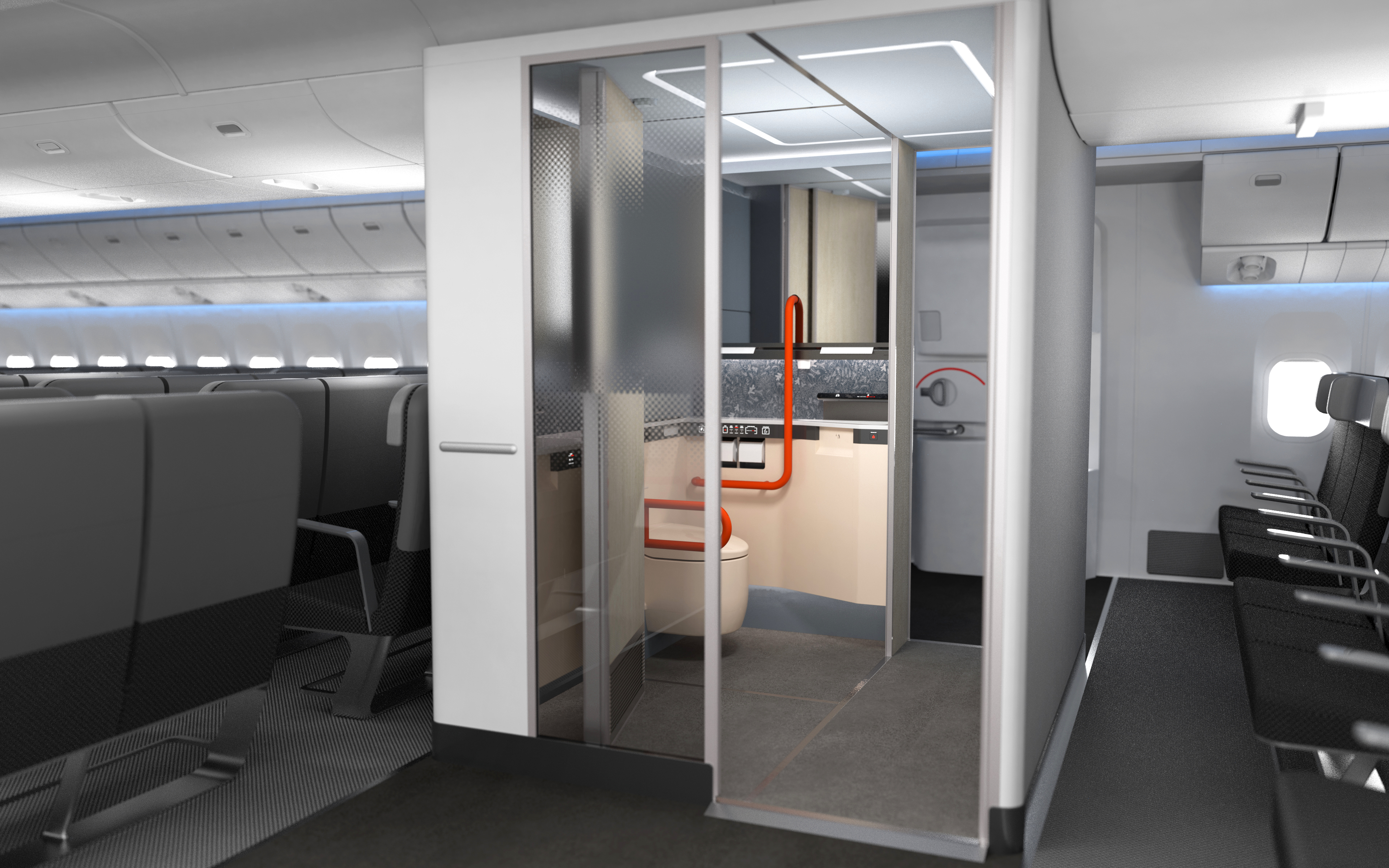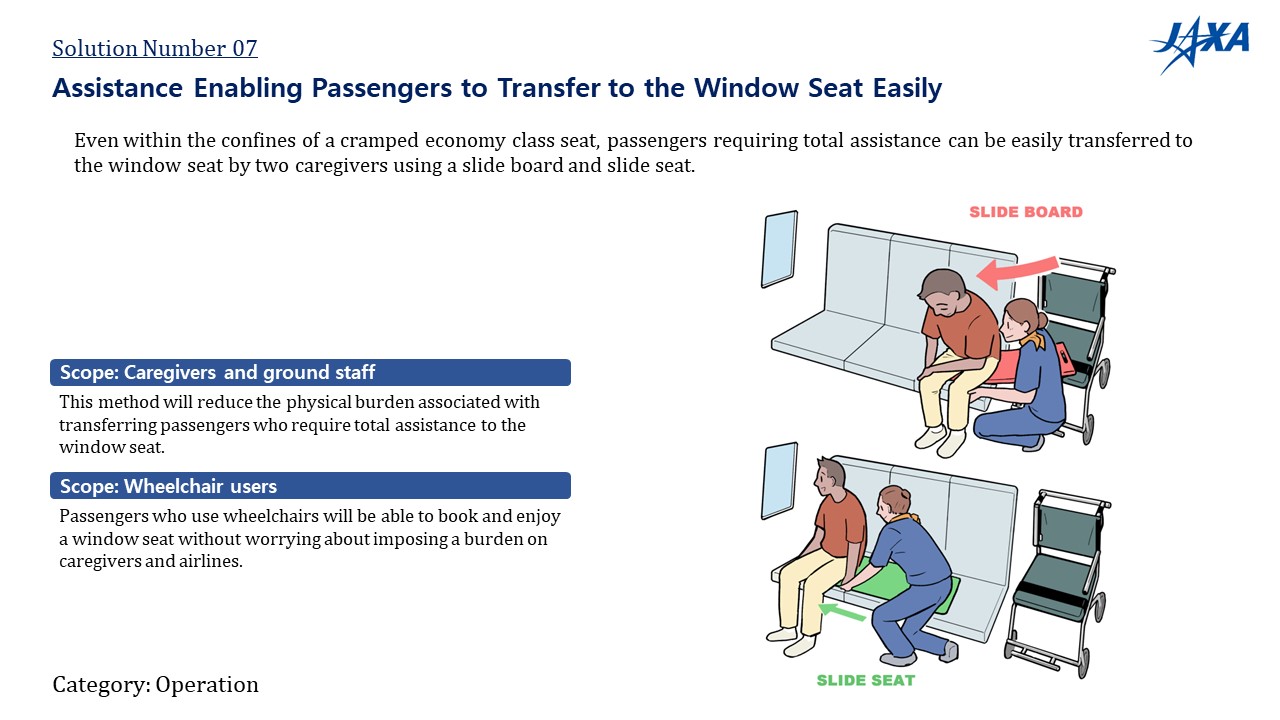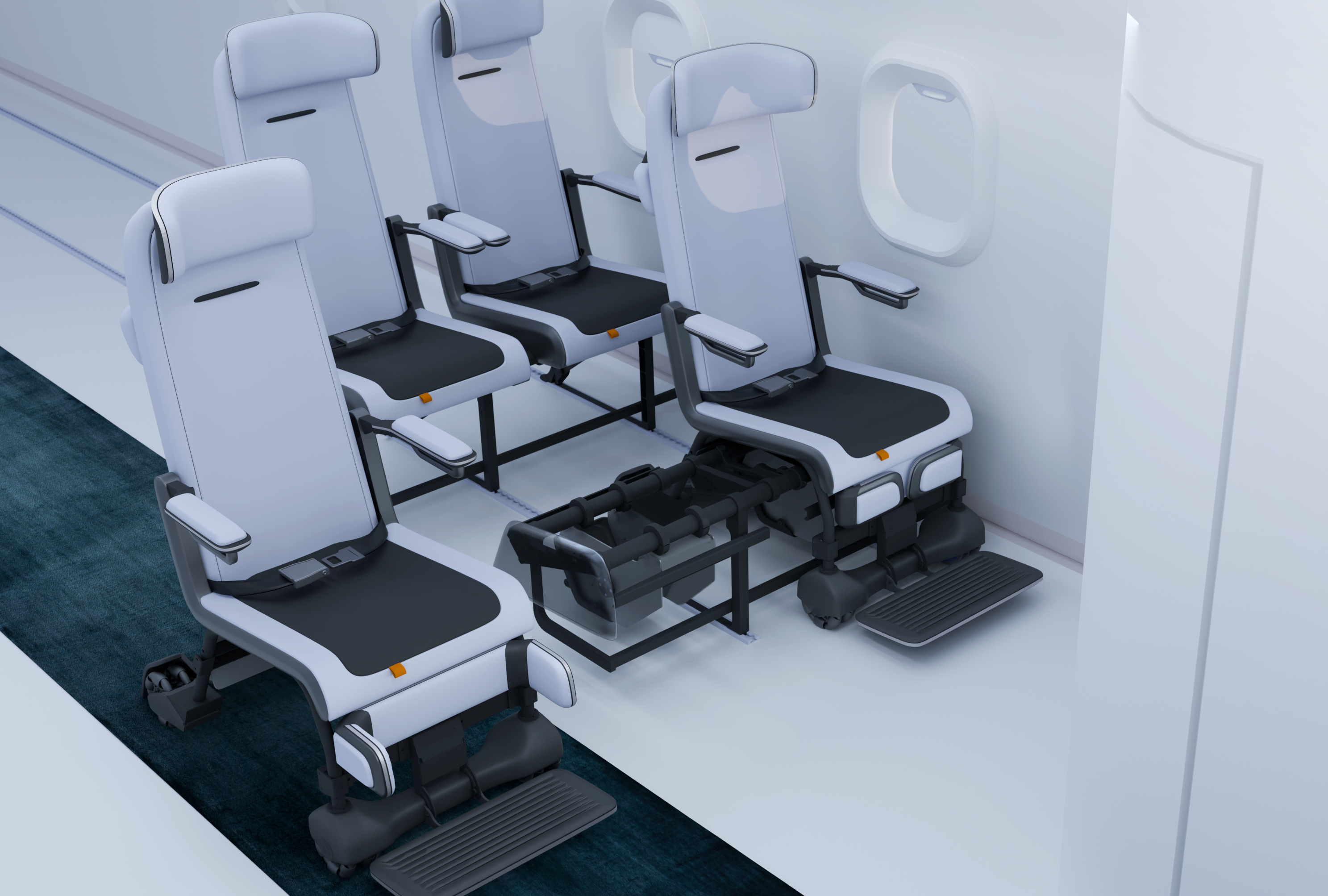Research & Development
JAXA promotes three research and development programs and a fundamental research program that underpins them.
Universal Design for Advancing All People’s Comfort in Air Travel
- Mar 13, 2025
- Proposal for a Detachable Aircraft Seat to Improve Accessibility for Passengers with Reduced Mobility
- Feb 7, 2025
- Proposal of assistance procedure for transferring passengers with reduced mobility to the window seat
Constant efforts have been made to create a barrier-free and accessible society. In recent years, values such as diversity and inclusion have gained widespread recognition, accelerating the movement towards building a better society where diverse people, including those with disabilities and older people, can fully enjoy comfortable lives with greater confidence.
While the introduction of accessible equipment and systems is progressing in public facilities and public transportation on the ground, similar progress is limited in air passenger transportation. Air passengers are still required to endure physical and psychological burden during flights due to the confined space and unique environment.
JAXA addresses research and development with regard to “Universal design for advancing all people’s comfort in air travel,” with the objective of relieving burdens and creating a comfortable experience for all people, including those with disabilities, older people, children, and even cabin crew. This study aims to address all aspects of air travel, from ticket reservation and boarding through disembarking to leaving the airport.
Solution proposal for advancing all people’s comfort in air travel
JAXA proposes solutions in terms of equipment and systems which enables burdenless and comfortable air travel experience for all people (*1) and in all aspects (*2). Initially, we conducted surveys to identify problems and troubles faced by airplane users. Then, we discussed ideas for equipment and systems that would solve those issues. Subsequently, specific and effective solutions were developed through feasibility discussions, taking into consideration technical, safety, and operational perspectives. The proposed solutions: No.01~30,No.31~62.
(*1) All people: able-bodied people (common issues), people with reduced mobilities, people with illnesses/injuries/internal disorders, wheelchair users, stretcher users, people with visual impairments, people with hearing impairments, and more. This also includes people with intellectual and developmental disabilities, people with mental disorders, older people, pregnant women/children/children with disabilities, people with food allergies, people with large physiques, cabin crew/ground staff.
(*2) All aspects: Ticket reservation, airport experiences, from boarding to taking off, drink/meal service, seatbelt signage, lavatory use/aisle movement, sleeping, IFE (in-flight entertainment), in-flight experience other than sleeping and IFE, preparation before landing, from seatbelt sign on to landing, and from disembarking to leaving airport.
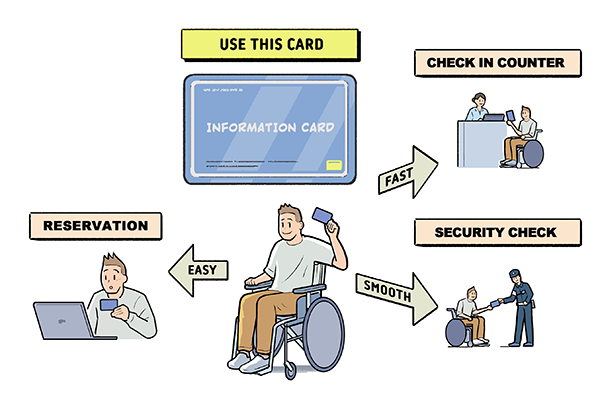
One of the proposed solutions: An information card on special assistance usable on any airline.
Accomplishments
A catalog of the Solutions for Advancing All People's Comfort in Air Travel (JAXA-RM-24-001E)
Accomplishments in collaboration with JAMCO Corporation
JAMCO‘s CABIN OF THE FUTURE @ AIX2023
Detailed design and prototyping of the solutions
As part of our efforts to materialize the 62 solutions, JAXA has undertaken several activities to develop a detailed design and prototype/mockup of the universally designed equipment.
Accomplishments in collaboration with JAMCO Corporation
Research and development for realizing “use of wheelchairs during boarding and flights”
One of the leading solutions for achieving all people’s comfort in air travel is to enable the use of wheelchair throughout the journey. This approach can address numerous challenges faced by wheelchair users. There is no need for them to transfer to cabin seats, alleviating a burden for both passengers and caretakers. Bringing their own wheelchairs, designed to each user’s body, allows them to keep a comfortable posture throughout the flight. Additionally, there is no need for them to check-in their own wheelchairs, eliminating concerns about damage or loss. From the viewpoint of wheelchair users, the use of privately-owned wheelchairs throughout the flight is more desirable. However, this has not been realized because the method for ensuring the safety of wheelchairs and passengers, as required by aviation safety regulations, has not been sufficiently developed.
First, JAXA selected a wheelchair that was expected to withstand the strength tests required by the regulations. Based on this wheelchair, JAXA is developing a “detachable wheelchair-like aircraft seat” as aircraft equipment. Key elements for technological development include design, securement methods, structural strength, and fire protection. The first phase of the study, focusing on the structural strength and securement methods, has been started.
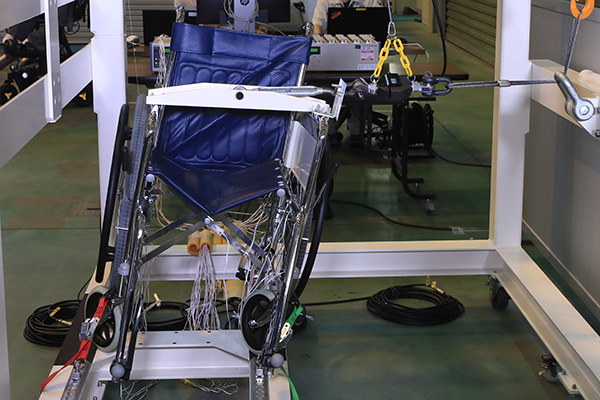
Photo of the static strength test using a commercial foldable wheelchair.
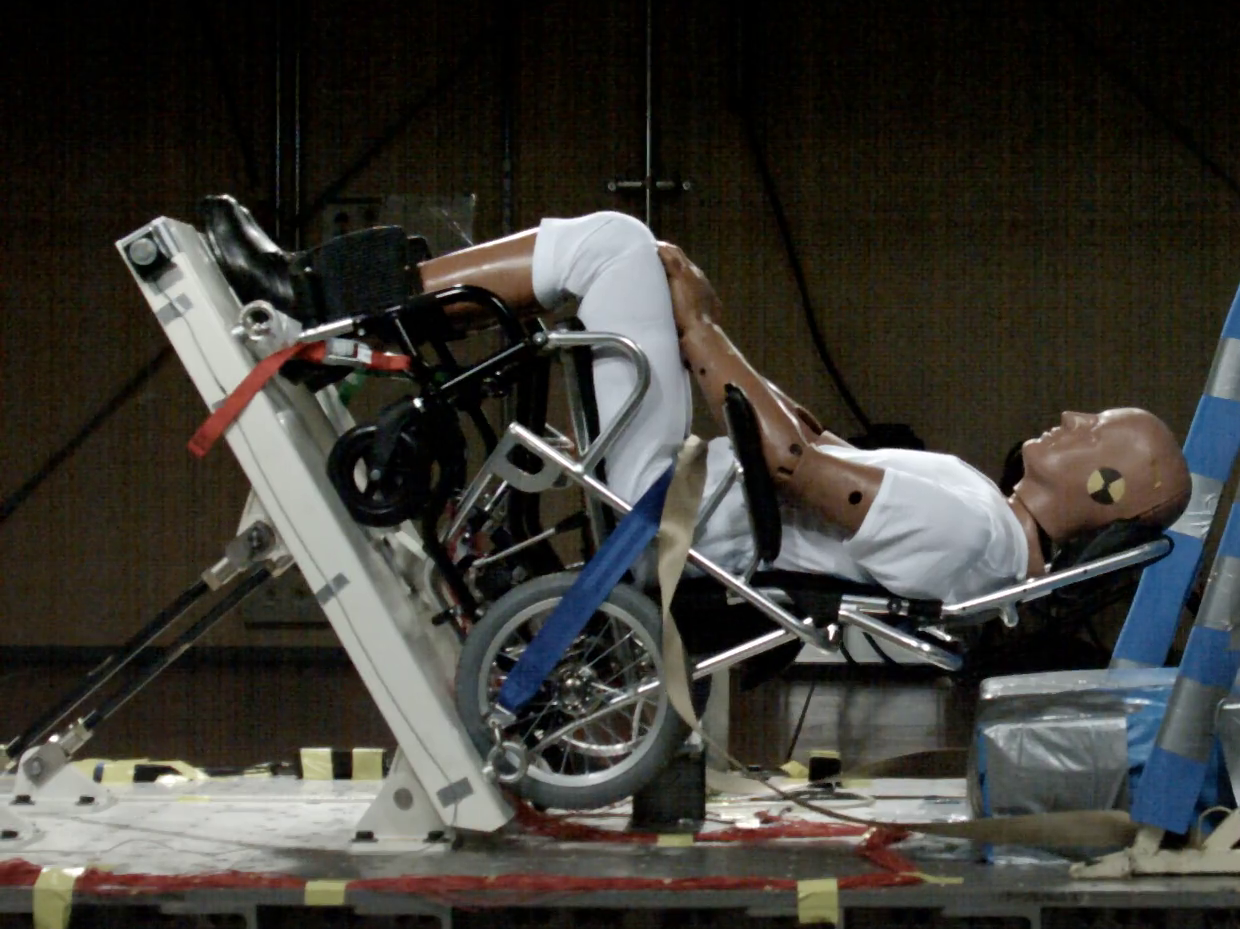
Photo of the dynamic strength test using a rigid wheelchair for automotive use
Accomplishments
Mar 13, 2025
